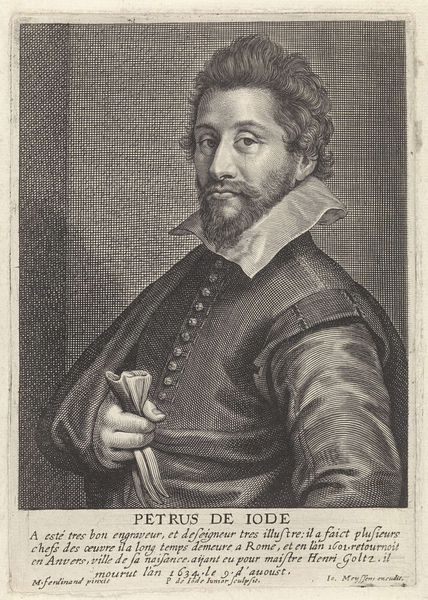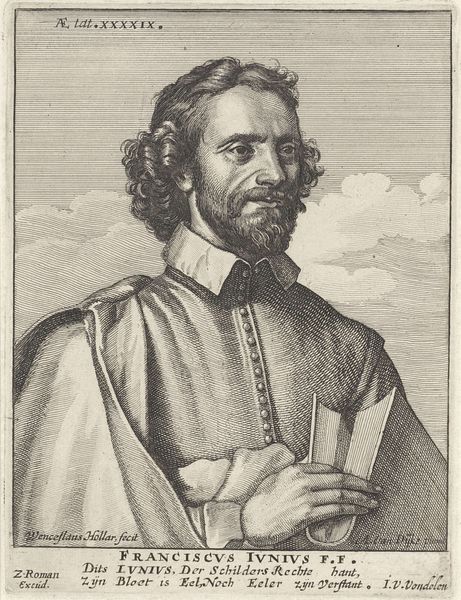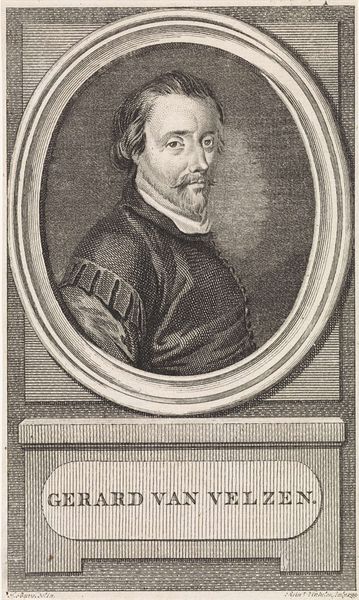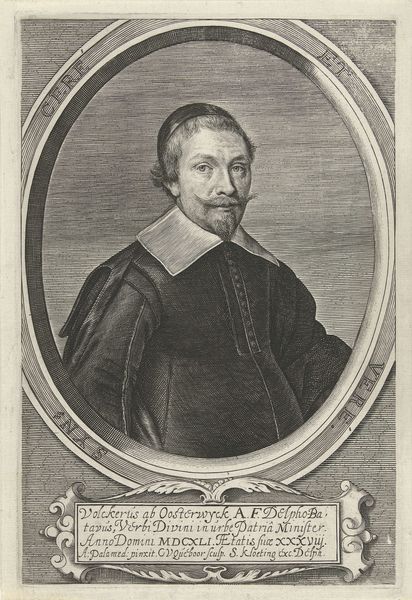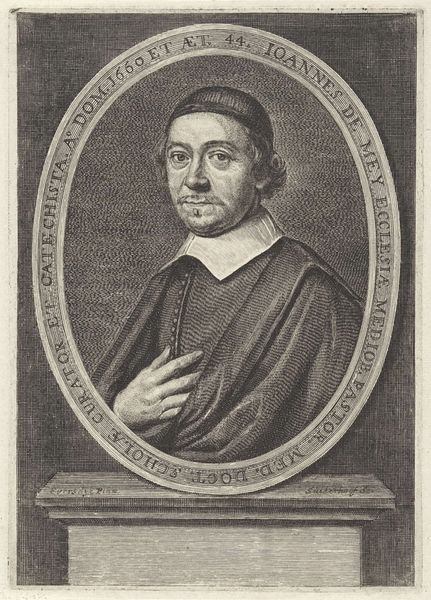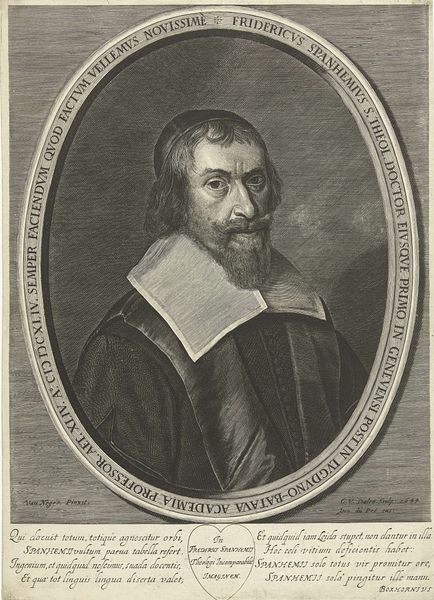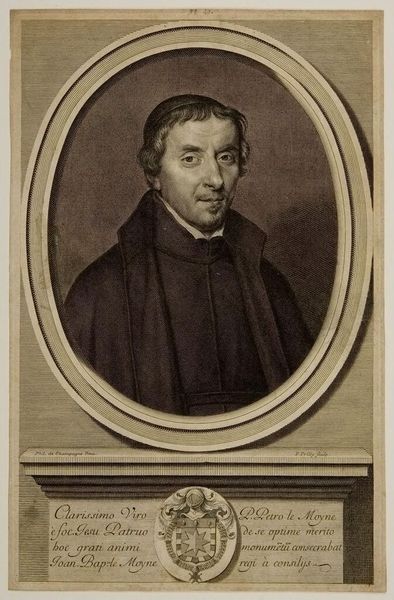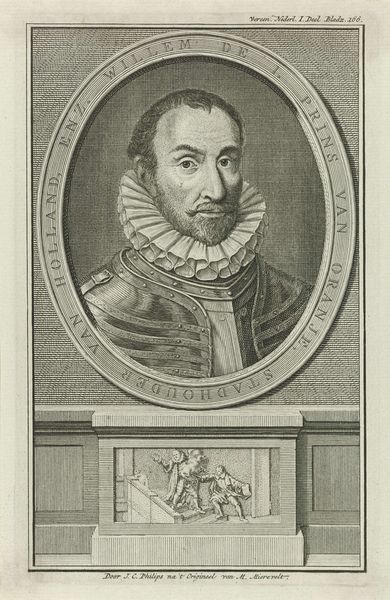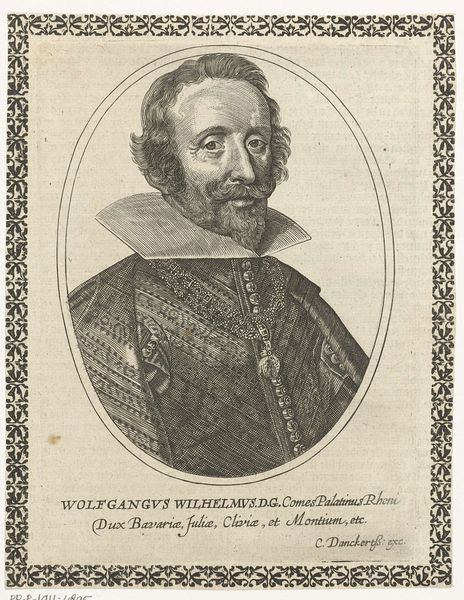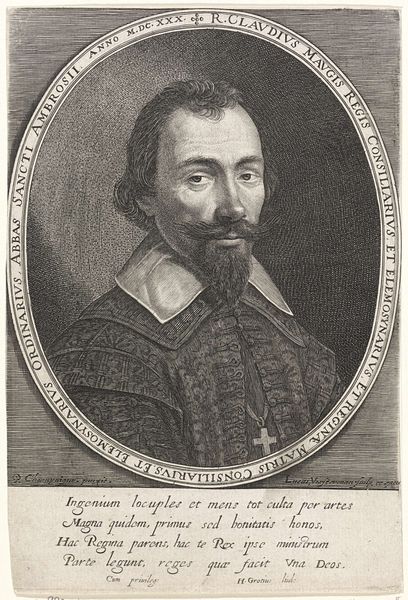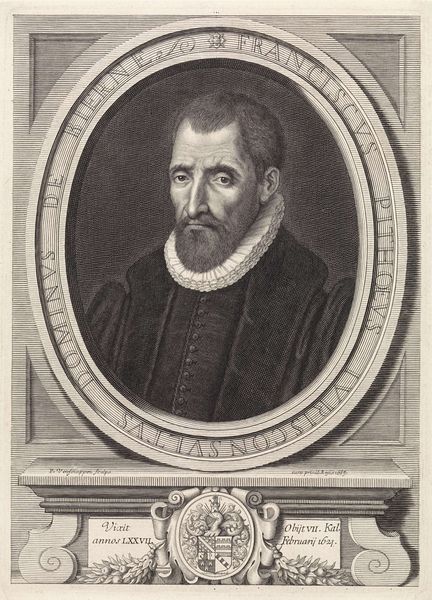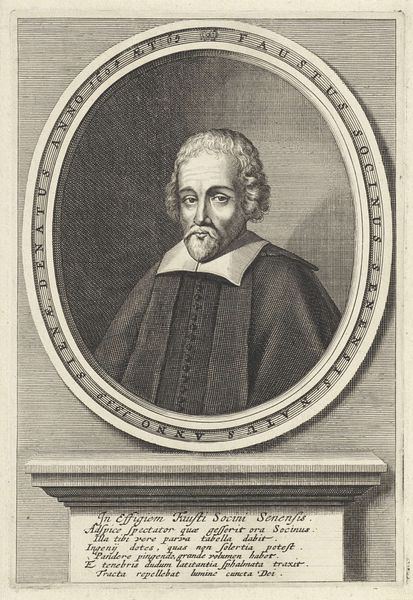
print, engraving
#
portrait
#
baroque
#
portrait image
# print
#
charcoal drawing
#
portrait reference
#
framed image
#
portrait drawing
#
genre-painting
#
engraving
#
fine art portrait
Dimensions: height 295 mm, width 193 mm
Copyright: Rijks Museum: Open Domain
Editor: This is a portrait of Cornelius Hazart, made somewhere between 1677 and 1700 by Richard Collin. It's an engraving. I'm immediately struck by the formality of it, and how the ornate frame almost traps the subject. What social context do you think this work speaks to? Curator: An excellent observation. This portrait, presented within such a formal structure, immediately communicates status and importance, but importantly *intended* status. Portraits like this served a very specific social function, especially for religious figures like Hazart, a prominent theologian. Consider where it might have been displayed – a library, perhaps, or even a public space within a religious institution. Its purpose was to project authority and piety but also, arguably, to assert the Church's influence. Editor: So it's not just about individual recognition, but also about the power structures at play? Curator: Precisely. Who gets memorialized in this way, and who *commissions* such a portrait, are key questions. Think about the cost, the artistic skill involved, and the statement the sitter wished to make. Are there similar images from this period, in engravings, that seem to represent different political viewpoints? Editor: Well, seeing it as a social statement definitely shifts my perspective. It’s more than just a picture of a man; it's a declaration of faith and social standing. It also makes me think about how printed images spread ideas at this time, and perhaps also solidify the influence of figures like Hazart. Curator: Exactly. The medium itself – print – played a vital role in disseminating such images, allowing for broader access, shaping public perception. Ultimately this also influenced and perpetuated baroque aesthetics throughout Europe. Editor: I hadn’t considered the influence aspect of distribution so much. It ties the artwork to a wider socio-political agenda. Thanks! Curator: Indeed! Examining these details really illuminates the crucial role of art in reflecting and shaping societal values.
Comments
No comments
Be the first to comment and join the conversation on the ultimate creative platform.

